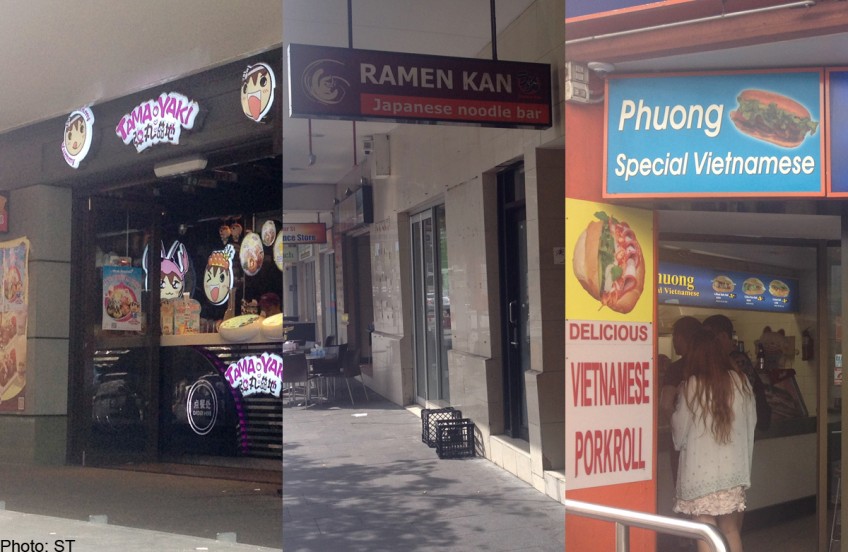Sydney's Chinatown turning into Asiatown

SYDNEY'S Chinatown is losing its distinct Chinese flavour and is turning into "Asiatown" in a dramatic shift which reflects the changing face of Australia's largest city.
The famous precinct was once dominated by Chinese refugees and shop owners, who began moving there in the 1920s to open businesses around the newly opened Haymarket wholesale fruit and vegetable market.
For many Chinese immigrants, it was a stepping stone to life in Sydney, especially when Australia maintained a White Australia policy - a series of policies aimed at curbing non-white immigrants which were not abolished until 1973.
But its character has rapidly changed in the past two decades.
Instead of being the preserve of Chinese migrants and the Australian-Chinese community, it has become a hub for migrants, students and tourists from across Asia.
The changes have been charted by an extensive study being conducted by the University of Western Sydney and the City of Sydney.
It found that the character of the area is rapidly shifting from a Chinese enclave to a growing pan-Asian hub.
The head of the study, Professor Ien Ang, said Chinatown has undergone an "exponential change" in the past 15 years.
She said the area has become more vibrant, diverse and dynamic, partly due to the influx of students from across Asia in the past decade, many of whom live in the developing residential blocks around Chinatown.
"One of the major changes is that Chinatown has become not just a Chinese and mostly Cantonese enclave, but a much more diverse Asian area," she told The Straits Times.
"In the early 1990s, it was a sleepy part of town.
Now, it is a much more dynamic outgoing area."
Since its origins as an enclave for Chinese immigrants, the area has developed into a bustling precinct teeming with restaurants, monuments, gift stores, bakeries and groceries.
The City of Sydney says it is now the city's third most popular tourist attraction after the Sydney Opera House and the Sydney Harbour Bridge.
The rapid changes in its identity are evident in the area's restaurants, which have long been the main attraction for both tourists and Sydney residents.
Chinese restaurants still dominate the small thoroughfare of Dixon Street that is the heart of the precinct, but the surrounding area is packed with Japanese izakayas and sushi restaurants, and Korean barbecue restaurants, as well as popular Thai, Indonesian and Malaysian eateries.
Professor Ang said some in the Chinese community were anxious about the area losing its China-related identity.
One solution for the future, she suggested, would be to include a Chinatown museum which told the area's history.
The ongoing three-year study of the area, to be completed later this year, found that students from across Asia were having a significant impact on Chinatown's transformation.
The number of international students in New South Wales from the top 10 Asian-source countries increased from 38,000 in 2000 to 149,000 in 2010.
China has been the largest source in recent years, followed by India and South Korea, with Singapore in the 14th spot.
Chinatown is now surrounded by small hubs of Korean and Thai restaurants that have become known colloquially as Koreatown and Thaitown.
Many of the foreign students tend to congregate or live around Chinatown because the precinct is close to the campuses of the University of Technology, Sydney, and Sydney University, as well as numerous technical colleges and language schools.
The clustering of Asian restaurants and shops in Chinatown has helped it to develop an "Asian brand", a new paper by a research associate at the University of Western Sydney who is contributing to the three-year study, Dr Alexandra Wong, found.
This in turn attracts more Asian businesses.
According to Professor Ang, the changes in Chinatown reflect a broader shift across Sydney and Australia, which is becoming more multicultural and more connected - both economically and culturally - to the Asia-Pacific region.
"In Australia, you have a jostling together of people from all over China, Thailand, Korea, Japan, the Philippines, Malaysia as well as non-Asians," she said.
"So, what is happening in Chinatown prefigures the city itself being more integrated with the region.
It shows us the way forward - the way of the future."
jonathanmpearlman@gmail.com

This article was first published on Mar 1, 2015.
Get a copy of The Straits Times or go to straitstimes.com for more stories.